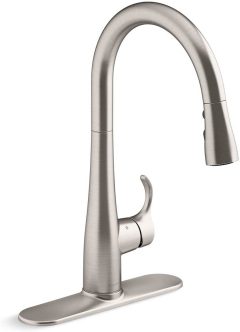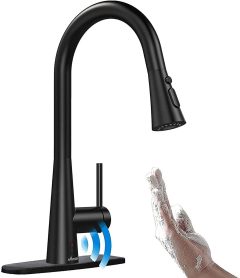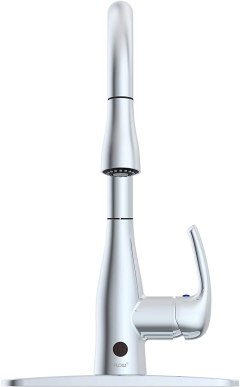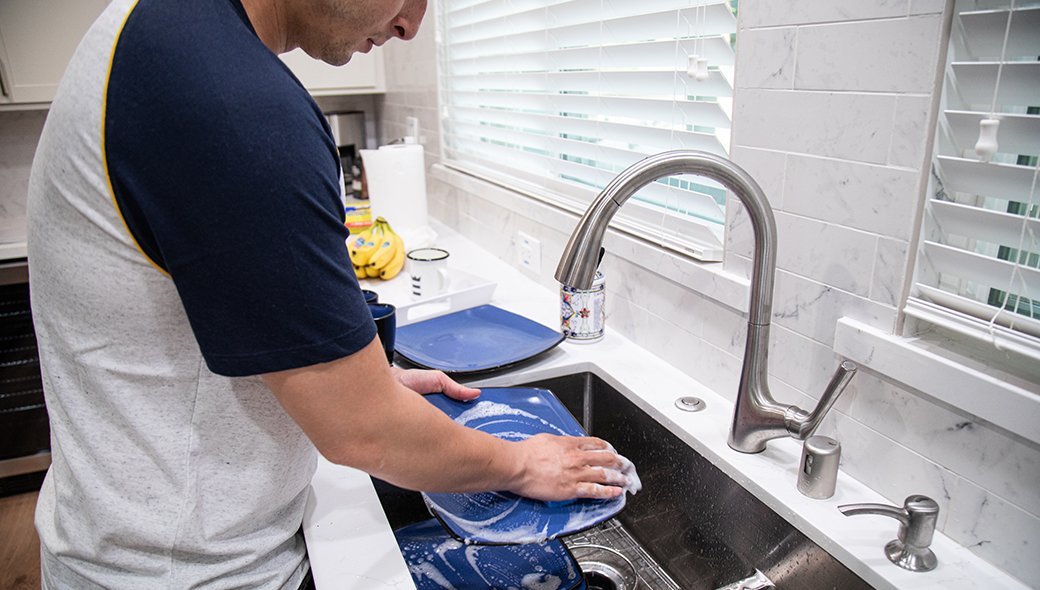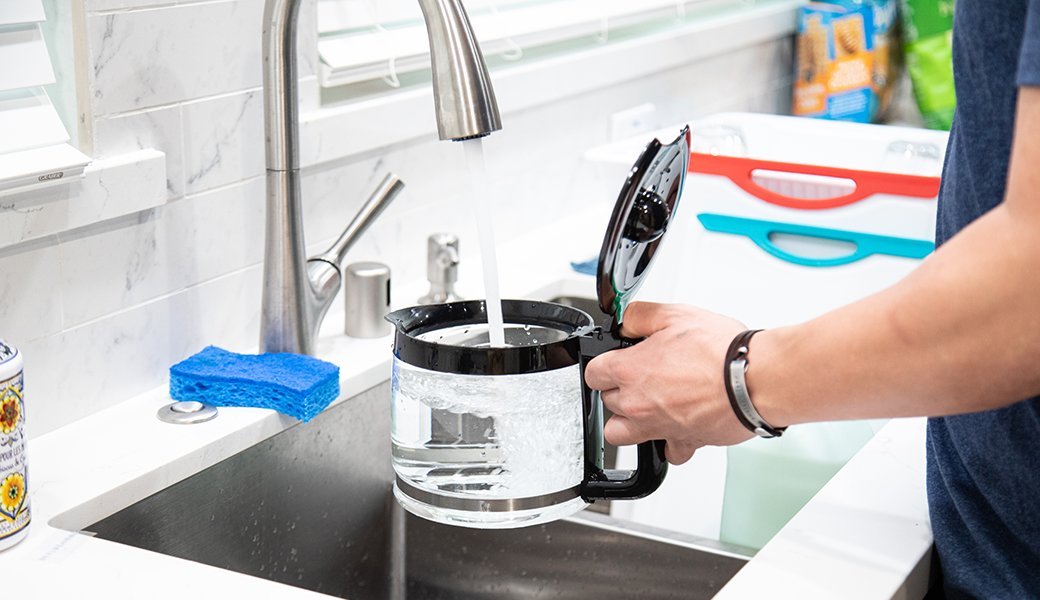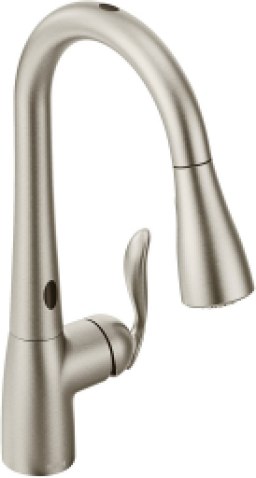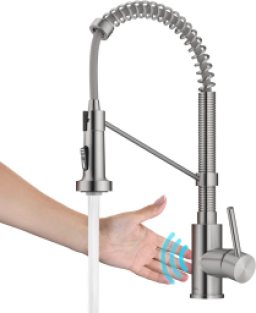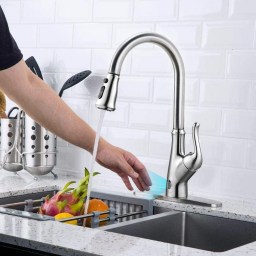Buying guide for best touchless kitchen faucets
Touchless kitchen faucets may seem a little frivolous, but they’re actually smart, hygienic, and energy-efficient additions to your home. You no longer need to keep reaching up to turn the water on and off or adjust the temperature, which helps to reduce the spread of germs. Plus, touchless kitchen faucets will automatically turn off when they don’t sense any more motion, so they can help you conserve water.
Some touchless kitchen faucets do work better than others, and if you choose one with inaccurate sensors, you may find it more annoying to use than a traditional faucet.
Key considerations
The two key factors you need to consider when choosing a touchless kitchen faucet are its design and sensor accuracy.
Design
Touchless kitchen faucets, like traditional faucets, are available in a variety of designs and finishes. It’s important to choose one that matches the rest of the appliances and finishes in your kitchen so that it doesn’t stand out too much. Fortunately, this usually isn’t much of an issue, especially if you have silver or chrome appliances, because most touchless kitchen faucet models have a number of finishes you can choose from. It may be more difficult to match the style of the faucet with the rest of your kitchen, but there are plenty of simple options that will fit in well with any decor.
Sensor accuracy
The sensor determines when the touchless faucet turns on and off. Some sensors are more sensitive than others, but there’s a fine line between sensitive and too sensitive. Some faucets may turn on when you simply walk past the sink, which can waste water. Others require you to place your hand directly in front of the sensor in order to get the water to turn on. This may lead to the water repeatedly shutting off when you’re washing dishes because the sensor cannot sense your movement. You can get an idea of how sensitive a touchless kitchen faucet’s sensor is by reading through customer reviews of the product before you buy it.
Features
Here are some additional factors you’ll want to consider when choosing a touchless kitchen faucet.
Power source
Some touchless kitchen faucets operate off electricity, while others use batteries.
Battery-powered faucets won’t affect your electric bill, but there’s a chance that the batteries could die midway through washing dishes, forcing you to stop and replace the batteries before you continue. If you go with a battery-powered model, you should check how long the faucet will operate before the batteries need replacing. You should always have some extra batteries on hand.
Electric touchless kitchen faucets are the way to go if you don’t want to deal with changing batteries. But these faucets may increase your electricity bill (though probably not significantly), and they are more complicated to install. If you’re not mechanically inclined, you may need a professional to help you hook up the wiring for these faucets.
Ease of installation
You should be able to install most battery-powered touchless kitchen faucets yourself as long as you have some basic tools. Your faucet should include a detailed instruction guide explaining exactly how to install all of the hardware. Electric faucets may be a little more challenging to install on your own, so you may be better off leaving installation to a professional unless you feel confident that you can do the work yourself.
Hose length
Most touchless kitchen faucets have extendable hoses that you can pull down to better clean your dishes. But the length of the hose will vary from one model to the next. It’s important that you choose one that is long enough to suit your needs or else you may have trouble cleaning your dishes properly. Ideally, the hose should extend down to at least below the edges of the sink. You may want a hose that is even longer if you have an especially deep sink.
Hose retraction
The majority of modern sinks have hoses that automatically retract when you let go of them. But a few require you to manually feed the hose back through the faucet in order to put the spray head back into place. This can be cumbersome and may cause some people to give up on pulling the spray head away from the faucet at all.
Water-saving features
One of the key advantages of a touchless kitchen faucet is that it can help you save water. Some faucets do this by automatically shutting off the water after a certain period of time, while others may automatically shut off the water as soon as the hose retracts and the spray head reconnects with the rest of the faucet. Not everyone will be interested in these features, but they’re worth considering if you’re especially concerned about saving water.
Did you know?
Some touchless kitchen faucets have multiple spray patterns to help you better clean your dishes.
STAFF
BestReviews
Price
Touchless kitchen faucets usually start at around $125, and it’s not uncommon for them to go for $400 or more. If you opt for a faucet on the lower end of this price range, you may find that the sensors do not work as well as faucets on the higher end, but that isn’t always the case.
It’s important to note that the upfront cost isn’t the only expense associated with touchless kitchen faucets. You’ll also need to buy new batteries if you choose a battery-powered model, while electric models may slightly affect your electric bill. However, these costs are likely to be negligible compared to the initial purchase price.
Tips
If you’re concerned about stains and fingerprints on your touchless kitchen faucet, choose one that has a spot-resistant finish.
It’s usually best to go with a touchless kitchen faucet that only needs a battery change every year or two.
An accurate sensor is especially important if you have small children who like to play with the kitchen faucet.
Multiple sensors can help to better sense your movement so that the faucet doesn’t turn off while you’re in the middle of washing dishes.
FAQ
Q. How many batteries do touchless kitchen faucets need?
A. It depends on the model, but most need somewhere between four and six AA batteries in order to operate. You should be able to find the information for the model you’re interested in by checking the product’s specifications. If you already own a touchless kitchen faucet, consult your owner’s manual.
Q. Can I still use my touchless kitchen faucet like a regular faucet?
A. Most touchless kitchen faucets still have a regular handle. You can use the regular handle if you wish to override the sensors or if your faucet’s batteries are dead so that you can still get water from the faucet.
Q. How do I control the temperature of a touchless kitchen faucet?
A. This is usually done through a separate temperature control unit. You set your preferred temperature, and the faucet’s water will remain at that temperature until you change it on the control unit.


